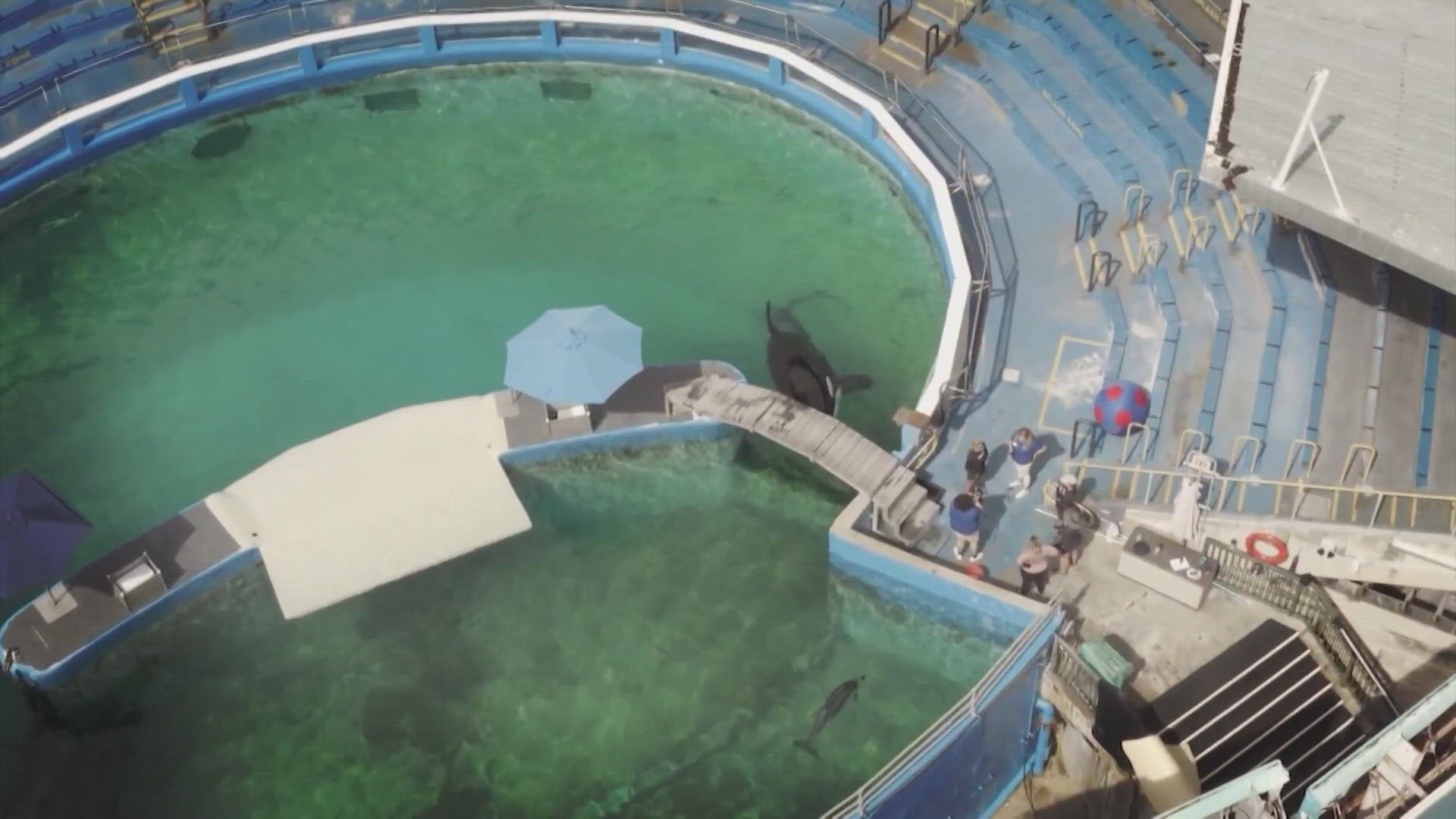MIAMI — Do you have a question about Tokitae or the process to move her back to the Pacific Northwest? Send an email or a video message to ask@king5.com, and it could be included in our coverage.
Tokitae is one step closer to returning home to the Pacific Northwest.
In a joint report released Monday by the Miami Seaquarium, which is managed by The Dolphin Company, and Friends of Lolita, plans to relocate the orca are moving forward.
Tokitae, who was captured in the 1970s at age four, spent the last 53 years in captivity at the Miami Seaquarium where she performed under the name Lolita. She is known to the Lummi nation as Sk’aliCh’elh’tenaut.
The Miami Seaquarium report says that Tokitae’s continuing stable health is “encouraging experts to continue efforts to pursue the bold step of giving her a new home.”
The report followed a health and welfare assessment of Tokitae, released Sunday. The findings from retired veterinarian James McBain and Dr. Stephanie Norman say Tokitae’s “energy, appetite, and engagement in daily activities were steady” throughout April.
The welfare assessment went on to say that Tokitae is in good condition with “unremarkable” labs.
A big concern for the relocation of Tokitae was ongoing health concerns after she fell sick last year with a chronic infection.
Keiko, the only orca to have been released after long-term captivity, died five years after being returned to his native waters in Iceland. Keiko, who was two when he was captured and released in his early twenties, failed to adapt to the wild after living in captivity with human companions.
The plan is not for Tokitae to be released into the sea but rather to be placed in a protected habitat. Her pen must be 250 feet long and 100 feet wide and filled with seawater. This is a sizeable increase from her current 80-by-35-foot tank at the Miami Seaquarium.
The aquarium agreed to relocate Tokitae at the end of March after years of demands for her return to the Salish Sea.
A plan to move Tokitae needs to be authorized by federal authorities. The preliminary plan includes a six-hour flight from Miami to Bellingham International Airport.

